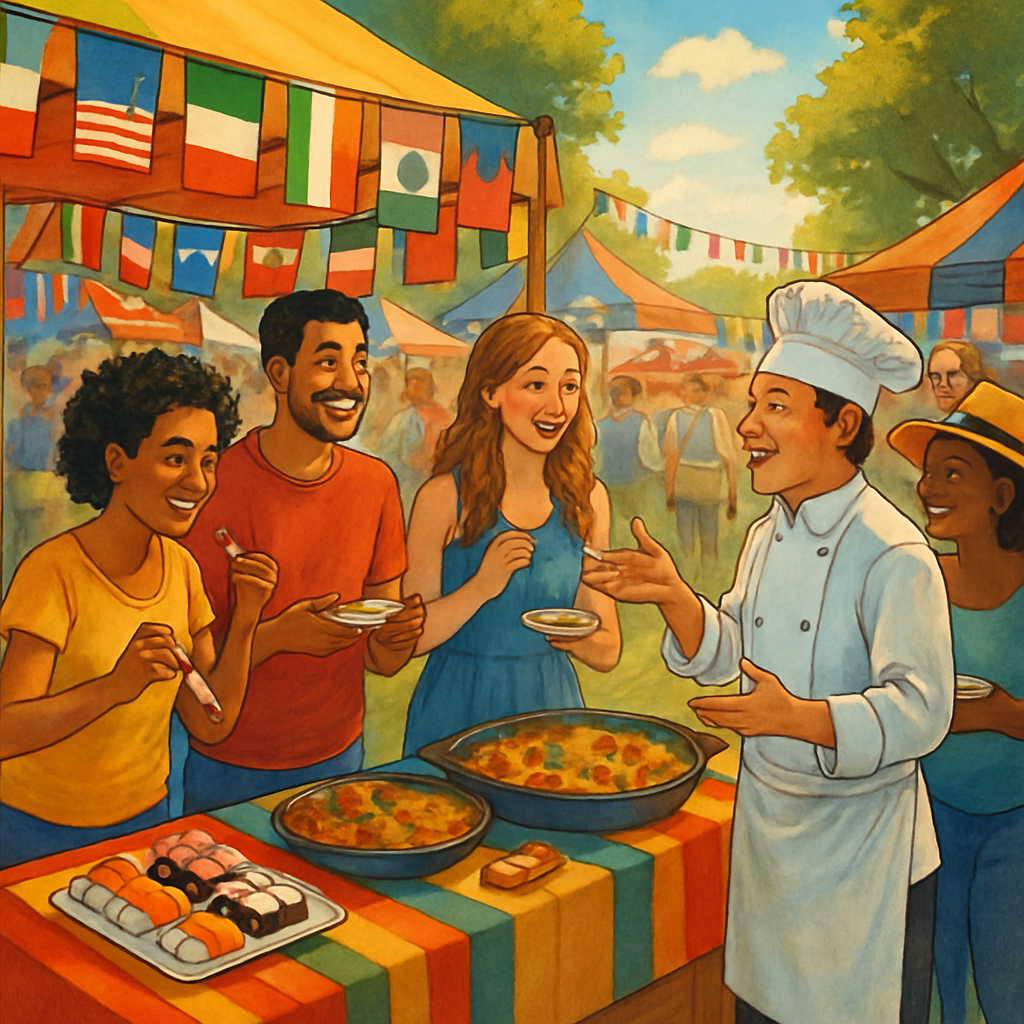The Evolution of Global Food Festivals and Their Impact on Local Communities

Food festivals have transformed from simple community gatherings into global cultural phenomena that draw thousands of visitors and showcase diverse culinary traditions. These events now serve as economic drivers, cultural preservers, and platforms for cross-cultural exchange. The evolution of food festivals reflects broader shifts in how we experience and share food culture in an increasingly connected world.
From Local Celebrations to Global Attractions
Food festivals trace their origins to harvest celebrations and religious feasts that have existed for centuries across cultures. Traditional events like Thailand’s Vegetarian Festival, Italy’s numerous sagre (food festivals dedicated to specific ingredients), and Mexico’s Day of the Dead celebrations all incorporated food as central elements of cultural expression.
What’s changed dramatically is the scale and reach of these events. Take the Singapore Food Festival, which began in 1994 as a modest showcase of local cuisine but now attracts international visitors and media coverage. Or consider how the Taste of Chicago, launched in 1980, has grown from a one-day event with a handful of restaurants to a massive five-day festival drawing millions of attendees.
This transformation didn’t happen by accident. The globalization of food culture through television, social media, and international travel created fertile ground for food festivals to flourish. Shows like “Anthony Bourdain: Parts Unknown” and platforms like Instagram sparked curiosity about global cuisines, while increased mobility made experiencing these foods firsthand more accessible.
“Ten years ago, maybe 60% of our visitors were locals. Now it’s closer to 40%, with people flying in from all over,” explained Maria Gonzalez, director of Mexico City’s Taco Festival, when I spoke with her last year. “We’ve had to completely rethink how we organize the event, from signage in multiple languages to accommodating international media.”
The economic potential hasn’t gone unnoticed by governments and tourism boards. Many countries now actively promote food festivals as tourism drivers. South Korea’s Kimchi Festival, Peru’s Mistura, and Australia’s Melbourne Food and Wine Festival all receive significant government support, recognizing their power to attract visitors and strengthen national brands.
But this evolution raises questions: As festivals grow and cater to international audiences, do they risk losing authenticity? Can they balance commercial success with cultural integrity? The answers vary widely depending on who’s organizing the festival and their primary motivations.
Community Impact and Cultural Preservation
Food festivals create complex ripple effects through local communities. At their best, they generate substantial economic benefits while preserving culinary traditions. At worst, they can commercialize culture to the point of caricature or price out locals from their own celebrations.
The economic impact can be substantial. A study of the Gilroy Garlic Festival in California found it generated over $2.5 million in direct spending within the community. Beyond ticket sales, festivals create temporary jobs, fill hotel rooms, and drive business to local restaurants and shops.
For many small-scale food producers, these events provide crucial exposure. “Our hot sauce business literally wouldn’t exist without food festivals,” says James Chen, founder of Volcano Sauce Company. “We started at the NYC Hot Sauce Expo five years ago with just samples. Now we’re in 30 states, and it all began with that direct connection to customers at festivals.”
Food festivals also play a vital role in preserving culinary heritage. The Slow Food movement has embraced festivals as tools for documenting and celebrating endangered food traditions. Their Terra Madre Salone del Gusto in Turin, Italy, brings together food communities from over 160 countries to showcase indigenous ingredients and traditional preparation methods.
I witnessed this preservation aspect firsthand at a small olive festival in a Greek village. Elderly women demonstrated traditional techniques for curing olives and preparing olive oil-based dishes, passing knowledge to younger generations through hands-on participation rather than written recipes. The festival created both economic incentive and social context for this knowledge transfer.
However, the community impact isn’t always positive. As festivals grow, they can strain local infrastructure, create noise and waste problems, or drive up costs. Venice, Italy, has faced backlash from residents as food tourism overwhelms the city’s capacity. Some festivals have addressed these concerns by implementing sustainability measures, capping attendance, or ensuring locals receive discounted access.
Cultural appropriation represents another potential pitfall. When festivals present simplified or stereotypical versions of ethnic cuisines without proper context or involvement from those communities, they risk trivializing complex culinary traditions. This has prompted many festival organizers to prioritize authenticity and community involvement in their planning.
The most successful festivals find ways to balance commercial viability with community benefit. Portland’s Feast festival donates proceeds to hunger relief organizations. Singapore’s World Gourmet Summit includes educational components for local culinary students. These approaches help ensure festivals strengthen rather than exploit the communities they represent.
Food Festivals as Platforms for Change
Beyond economics and preservation, food festivals increasingly serve as vehicles for broader social and environmental change. Festival organizers have recognized their unique position to influence both industry practices and consumer behavior.
Sustainability has become a central focus for many events. Copenhagen’s Food Festival requires vendors to use compostable serving materials and prioritizes local, seasonal ingredients. Feast Portland eliminated single-use plastics and implements comprehensive composting systems. These practices not only reduce the environmental impact of the events themselves but also demonstrate sustainable approaches to thousands of attendees.
Food waste reduction represents another area where festivals drive innovation. Outstanding in the Field, which hosts farm dinners across North America, showcases “nose-to-tail” and “root-to-stem” cooking techniques that utilize entire animals and plants. The Food Film Festival in Amsterdam screens documentaries about food waste alongside meals prepared from ingredients that would otherwise be discarded.
Many festivals now incorporate explicit social justice components. The Slow Food Nations festival features discussions about food access and equity alongside its tastings. The Melbourne Food and Wine Festival has added programming focused on indigenous Australian ingredients and cooking methods, highlighting the often-overlooked contributions of Aboriginal culinary traditions.
Food festivals also create space for difficult conversations about the future of food systems. South by Southwest in Austin regularly features panels on topics like cellular agriculture, climate change adaptation, and the ethics of meat consumption. By combining these discussions with enjoyable eating experiences, festivals can make complex topics more accessible and engaging.
“People come for the delicious food, but they leave thinking differently about what they eat and why,” notes food writer and festival programmer Ruth Reichl. “That’s the magic of these events they can change perspectives without feeling preachy.”
This evolution toward purpose-driven programming represents a maturation of the food festival concept. Rather than simply celebrating food as it exists today, many festivals now actively work to shape food culture for tomorrow.
Food festivals have evolved from simple celebrations into complex cultural institutions with significant influence on local economies, cultural preservation, and food systems reform. Their future development will likely be shaped by several factors: growing concerns about carbon footprints associated with food tourism, increasing emphasis on equity and inclusion, and the ongoing tension between commercial success and cultural authenticity.
The most successful festivals will be those that can adapt to these challenges while maintaining what makes them special the joy of shared meals and the discovery of new flavors. In doing so, they’ll continue to nourish not just our bodies but our communities and cultural connections as well.


